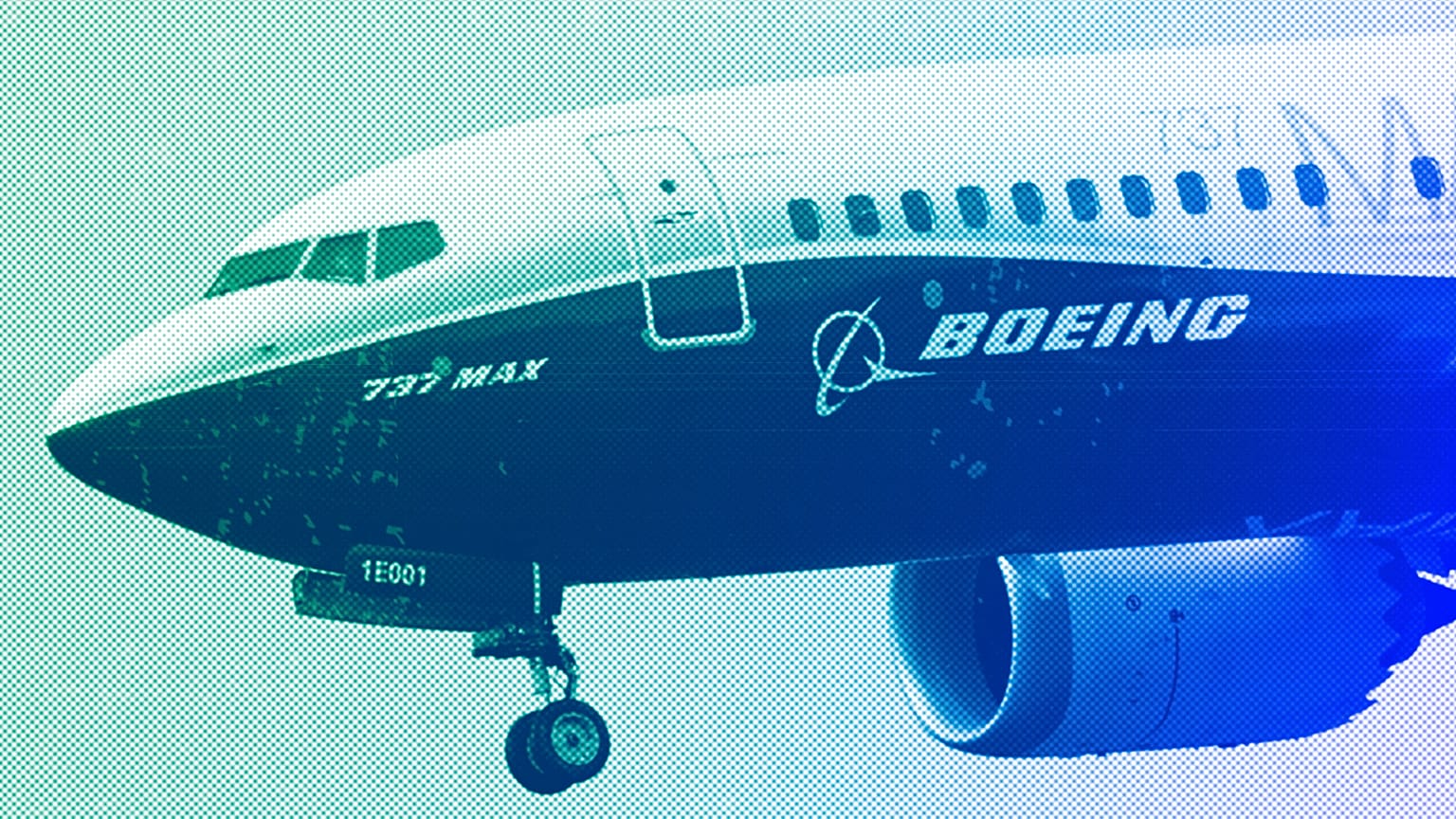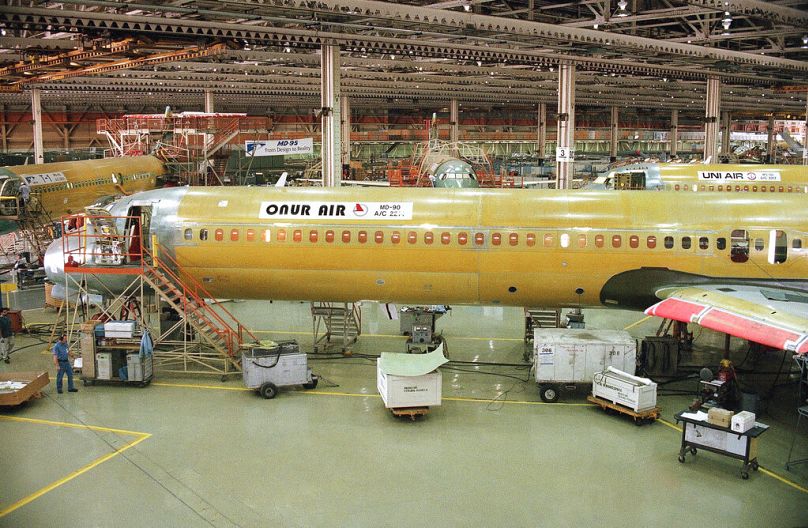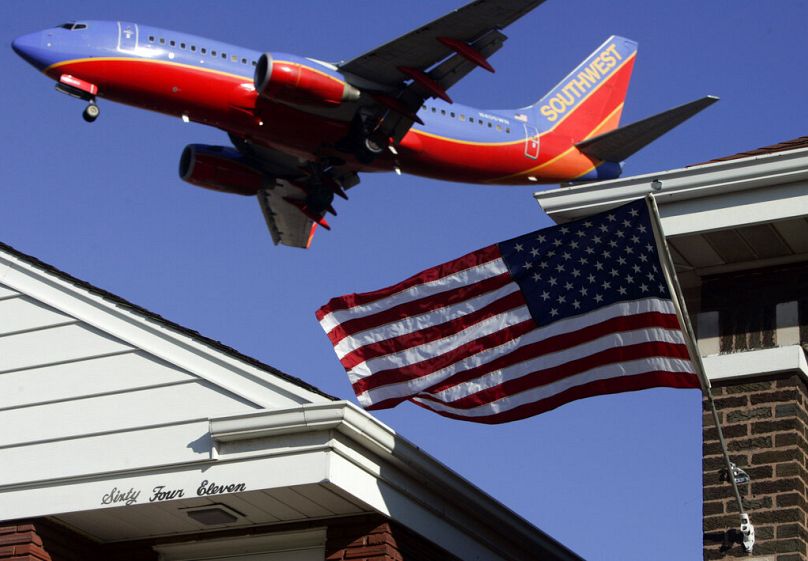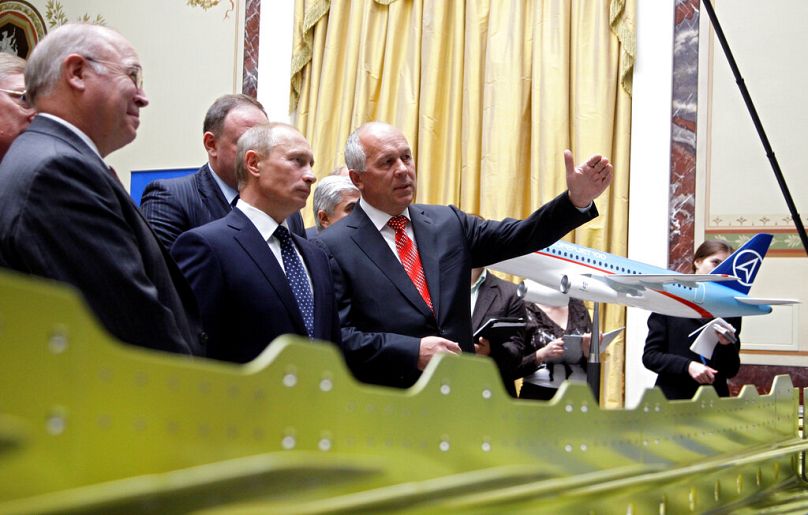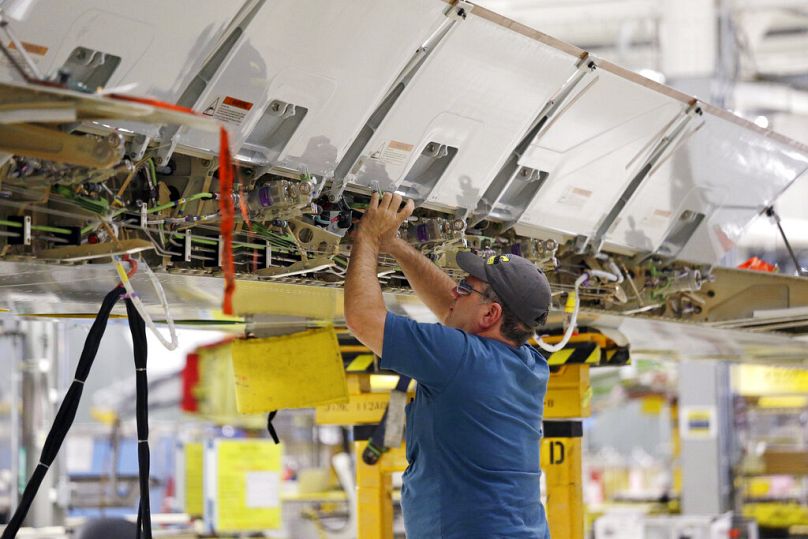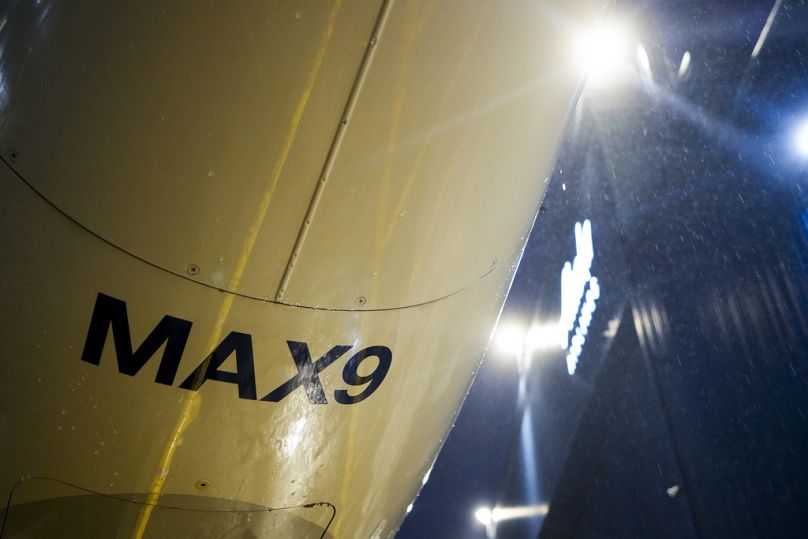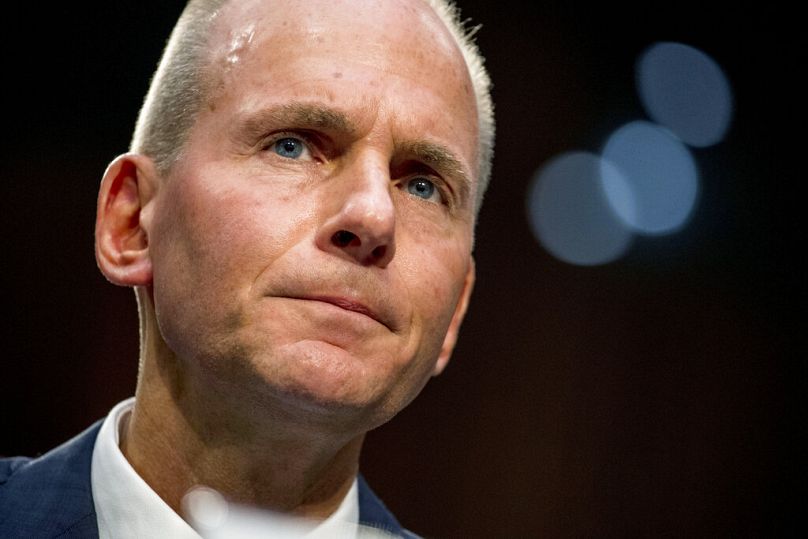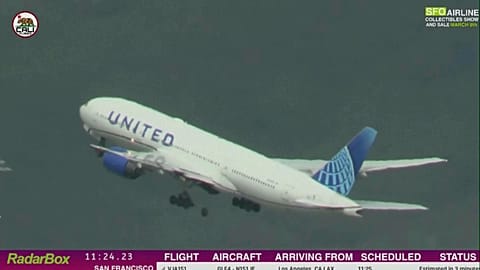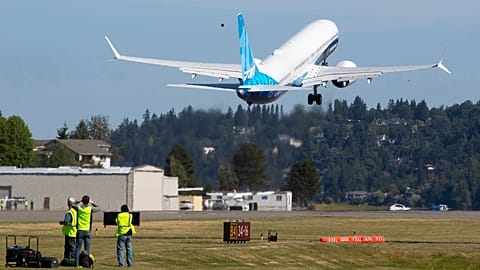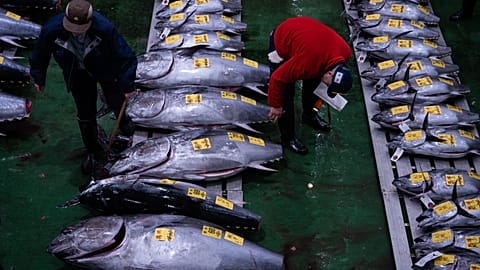The combination of a misaligned merger, a lack of in-house skills and experience to run a global network, and other major factors compromised the future of the once-great company, Yves Doz and Keeley Wilson write.
The recent Alaska Airlines incident is just the latest in a string of sometimes tragic mishaps by the aircraft manufacturer – where did it all go wrong?
On 5 January, an Alaska Airlines Boeing 737 MAX 9 lost a fuselage cabin panel at 4,900 metres and was forced to conduct an emergency landing, fortunately without any major injuries to passengers and crew.
Still under investigation, it seems that the panel in question (provided by a Boeing partner, Spirit AeroSystems) had not been properly bolted to the fuselage, a major manufacturing defect and quality-control oversight.
Loose parts were soon found on other 737 MAX 9 planes. The result was the grounding of all 171 Boeing MAX 9 jets by US regulators and a more than 10% drop in the company’s share price.
To compound Boeing’s woes, the US Secretary of State Antony Blinken’s 737 was grounded in Davos following mechanical failure. And just a few days ago, Boeing was again in the limelight when a 747 had to perform an emergency landing in Miami with an engine on fire.
These are just the latest in a string of unfortunate and sometimes fatal incidents, including two deadly crashes involving Boeing's 737 MAX planes, which have all served to undermine public confidence in the company.
Other new Boeing airplanes such as the 787 long-haul Dreamliner faced development hold-ups, delayed regulatory approval and suffered serious teething troubles (such as its batteries catching fire).
Even the famous Boeing 777 suffered temporary groundings due to safety concerns, and the development of the latest version is running four years behind schedule.
This once-great company has been stumbling from crisis to crisis. But how did it get to this point?
Our research on global innovation and the failings of corporate governance suggests that the combination of two major strategy shifts in the early 2000s compromised the future of the company.
A misaligned merger
First, in 1997, Boeing acquired McDonnell Douglas. While the firm had a great aerospace tradition in building airliners, starting with the iconic DC3, McDonnell Douglas found it increasingly difficult to compete with first Boeing and then Airbus.
By the time the Soviet Union collapsed, the company’s military business had fallen on hard times, and it had to be very sensitive to costs.
Lacking the resources to embark on new product development, merging with Boeing was McDonnell Douglas’ way to exit the industry.
However, while the firm’s name was retired, the McDonnell Douglas’ management team did not leave quietly.
In fact, as we have observed first-hand in other mergers — for instance, Solvay and Rhodia in Europe or, much earlier, Glaxo and Wellcome — the tougher, leaner managers of the weaker company elbowed out the more gentlemanly leaders of the bigger company.
The result was that Boeing’s idealistic engineers ended up being run by McDonnell Douglas hard-bitten veterans.
These were accountants, financial controllers and other managers obsessed with cost savings and used to running things on a shoestring budget. They were also very sensitive to shareholder wealth.
A new operating model
Concerned with limiting risks and development costs, they recruited risk-bearing partners to invest in new aircraft programmes and to co-develop and co-produce new plane models.
Partners would share in development costs and work, and then produce subassemblies of the plane. These ranged from non-critical components, such as the cabin furnishings, to much larger and more critical elements — for example, the fins, wings, and even whole fuselages.
This wasn’t necessarily an entirely new approach for Boeing. Determined to never again take the kind of “bet-the-company” risk that had characterised the development of the B747 “jumbo jet” in the 1960s, the firm had already successfully pioneered this practice with a consortium of Japanese aerospace companies for both the 767 and 777.
After the acquisition of McDonnell Douglas, Boeing wanted to minimise its own costs and investments.
To do so, it simply brought in new risk-sharing partners — in Japan, the US, Italy, South Korea and other countries whose aerospace industries were not already closely linked with their rival Airbus.
It meant Boeing was able to minimise its own investment and focus on overall system integration and final assembly, subcontracting the building of plane structures to its partners.
A lack of in-house skills and experience to run a global network
For decades the civilian airliner market has been very cyclical. Fluctuations in demand create peaks and troughs in engineering and production needs.
Increasingly over time, the new, highly cost-conscious Boeing resorted to layoffs when that demand slackened. Many highly experienced workers and engineers were made redundant only for the company to find that they were no longer available for re-hire when demand picked up.
While growing reliance on partners and subcontractors made up for the shortfall of skilled personnel, hands-on experience and competence in the actual design and building of aircraft were lost.
This meant that Boeing’s high-level system integration capabilities were hard to maintain without a more detailed understanding of how to design and build plane structures.
The systems required to control the full design of new aeroplane configurations are extremely complex. Most Boeing engineers at the time only understood a small part of those systems and had to rely on local “experts”, who had become scarce.
Driven by cost-reduction priorities, Boeing also moved some of its own design and development activities to lower-cost locations, such as Moscow. However, Russian expertise in designing and building airliners lagged behind the US.
Additionally, some talented personnel had left Russia, and the new overseas design centres were no substitute for the company’s home base near Seattle.
With the 787, the shift to composite materials for major parts of the plane structure further compounded the potential for difficulties to arise.
Because of this lack of experience, the ageing of these materials was not well known and assembling major plane sections using these materials — more easily susceptible to wear and tear than traditional metals — proved difficult.
Boeing’s partners were struggling with the design and manufacturing ability of their own contributions, needing emergency help from Boeing that led to major delays in the development of the 787. Boeing’s remaining engineering skills were simply stretched too thin.
'This needs a Babel fish'
Put simply, Boeing underestimated what it took to scale up and run a global supply chain partner network, delivering the hundreds of thousands of parts and subassemblies each plane needed. Working with foreign partners and design centres presented unique and unexpected challenges.
Take the example of language. Even when everybody spoke basic English, the use of culture- or country-bound metaphors created problems.
For example, top Boeing managers would say “this needs to be a Fisher-Price”.
While all US engineers understood the reference to a well-regarded brand of plastic toys that could be easily snapped together, this was meaningless to engineers from some other countries.
Time zone differences, e-mail system heterogeneity, multiple versions of design tools and filing systems all further got in the way of smooth operations.
Our research suggests that one can successfully engage in global innovation projects only by starting small. That means just a few partners and a few locations, under the leadership and discipline of experienced global managers. Boeing simply tried to do too much, too fast.
Flaws in the MAX
And then came the 737 MAX disasters in Indonesia and Ethiopia. While the reasons for the accidents have been covered in detail elsewhere, the underlying cause was due to shortcuts in the redesign of the planes to accommodate a larger, more efficient engine.
Shortcuts were taken due to financial constraints, time pressures and the competitive threat of Airbus, whose A320 planes could easily accommodate the new engine.
Flaws in the reliability of the new control software were then overlooked — though they were known to a few engineers and voiced internally by Boeing pilots who had tested the new software on simulators as early as 2016.
It meant the plane was put into service with no additional training for pilots (another cost-saving measure).
The Federal Aviation Administration (FAA) enquiry into the crashes showed that Boeing staff had not been sufficiently candid in their interactions with either FAA inspectors certifying the planes, or with their customers about the risks the new software introduced and the need for extra pilot training.
The 737 MAX fleet was grounded for two years following the crashes, and its production was reduced and then stopped. The trusting relationship with the FAA and many customers was broken.
The former McDonnell Douglas culture now permeating Boeing led to cutting corners in product design, development and commercialisation.
Boeing had embarked on a fundamental transformation of its business model from being a US aircraft designer and manufacturer towards becoming an orchestrator of a growing number of partners and subcontractors worldwide.
Without understanding it, the company’s leaders were perhaps taking greater risks than in developing the 747 decades earlier.
The lack of attention to safety: A governance problem
In 2022, Boeing paid a fine of over $200 million (€185.5m) in a suit brought by shareholders against its board for failing in its fiduciary duty to monitor quality.
The shareholders argued that safety was not an item for discussion of the board and that there was no mechanism to alert directors to safety issues.
Less than a year after Aviation Week, the leading aerospace trade magazine, named him “Person of the Year 2018”, Boeing’s CEO David Muilenburg was fired by the board. He was mainly accused of not having taken safety seriously enough.
An enquiry revealed Boeing had no board member in charge of safety, contrary to the standard practice of all airlines and most other aerospace companies. There was a personnel council for safety, but this body was not connected to the CEO or the board.
Up until 2019, Boeing’s board had been rich in retired government officials but short in aerospace expertise. Financial engineering took priority over aerospace engineering.
The new CEO Dave Calhoun, who was appointed at the start of 2020, recognised these deficiencies and renewed half the board.
Still, it takes time for transformational changes in company culture to trickle down from the board into a company’s operations. The newest directors on Boeing’s board are likely only hitting their stride about now.
Too much, too fast
In retrospect, Boeing undertook several fundamental changes, seemingly unaware of how ambitious and difficult they were.
It moved from having just a few select partners around the world — mostly in Japan, where manufacturing excellence is a norm— to building a much larger network of global partners that lacked collaborative experience. This alone was a major transformation.
With its growing reliance on partners, Boeing focused on system integration and final assembly, losing some of the depth of its industrial competencies.
Shifting to composite materials made this transformation even more difficult, as did the cost-saving culture it imposed on itself amid growing competition from rival Airbus.
Poor governance, full order books (thanks to strong growth in air travel) and an ill-composed, uninformed board prevented the various dangers Boeing courted with from being perceived and assessed realistically.
But perhaps the biggest challenge the company faces is trying to overcome the quality control issues that have arisen from the complex and dispersed nature of its supply system. Only time will tell if Boeing can rescue itself from the challenges it has created.
Yves Doz is a professor of strategic management, and Keeley Wilson is a senior researcher at the Institut Européen d'Administration des Affaires (INSEAD).
At Euronews, we believe all views matter. Contact us at view@euronews.com to send pitches or submissions and be part of the conversation.















